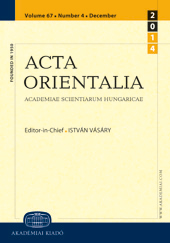Scorched-earth tactics in Ottoman Hungary: On a controversy in military theory and practice on the Habsburg-Ottoman frontier
Scorched-earth tactics in Ottoman Hungary: On a controversy in military theory and practice on the Habsburg-Ottoman frontier
Author(s): Géza PálffySubject(s): Military history, The Ottoman Empire
Published by: Akadémiai Kiadó
Keywords: Ottoman Hungary; Habsburg—Ottoman borders; scorched-earth tactics; Lazarus von Schwendi; defence system of the Kingdom of Hungary; Habsburg Monarchy; Hungarian nobility and Estates;
Summary/Abstract: Scorched-earth tactics are as old as warfare itself. Throughout Europe military commanders of the Early Modern Age used them, as the Persians did against the attacking Ottomans. Accordingly, along with his fellow-generals, Lazarus Freiherr von Schwendi, one of the best-known German military theorists and commanders of the 16th century, repeatedly urged that scorched-earth tactics be introduced in the Habsburg Monarchy’s Hungarian theatre of war against the Ottomans, and that territories lost after the fall of Buda in 1541 be laid waste. Despite this, the systematic and widespread use of these tactics was rather rare in the areas of Hungary in which the Habsburg Monarchy and the Ottoman Empire faced each other during the 16th and 17th centuries. When they were chosen, they were employed only to a limited extent. While most of the pay of the soldiers serving in the border-defence system protecting Central Europe was provided by the Austrian, Bohemian and German provinces of the Habsburg Monarchy, a significant proportion of their food came from regions of Hungary that were under Ottoman sway. At the same time, these regions were not just a source of foodstuffs for those serving in the chain of fortresses built against the Ottomans, but also an area which offered economic opportunities to broad social strata in the Kingdom of Hungary (nobles, border-fortress soldiers and market town peasants), primarily in the spheres of cattle-breeding and trade. As a result of all this, the systematic laying waste of these territories conflicted with the fundamental interests of Hungarian society and Estates. The serious political conflicts that would have accompanied the use of scorched-earth tactics (whose consequences would in any event have been uncertain) were never invited by the Habsburg military and political leadership.
Journal: Acta Orientalia Academiae Scientiarum Hungaricae
- Issue Year: 61/2008
- Issue No: 1-2
- Page Range: 181-200
- Page Count: 20
- Language: English
- Content File-PDF

